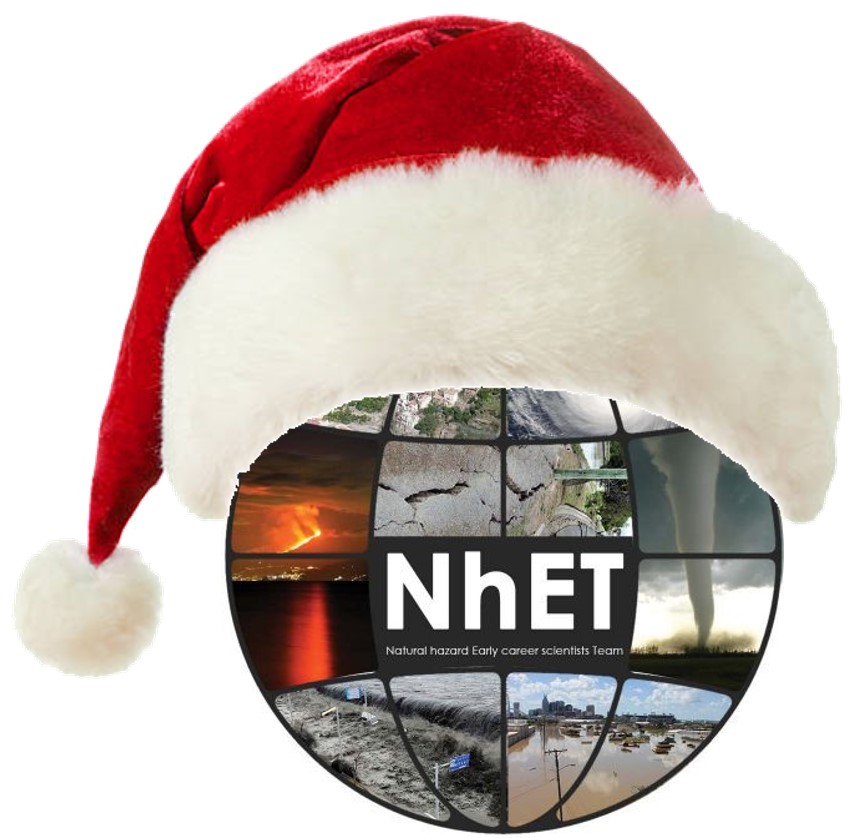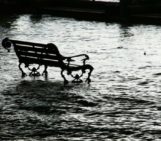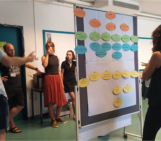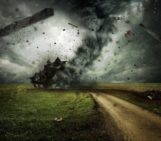
We used this poster to catch the attention of young scientists, interact with them and understand if they were interested in joining the network. More than 20 researchers left their contact details and were willing to actively join the Team. Credit: Valeria Cigala.
If you were wondering what a group of young scientists such as NhET does in its free time, this is the right post for you to read!
In between doing exciting fieldwork on an active volcano, writing an inspiring paper on landslide monitoring and applying that complicated algorithm for the analysis of earthquake return times: we organize events at the EGU’s General Assembly (GA) targeting Early Career Scientists’ (ECSs) interests. Can you believe it? Since the deadline for sending an abstract for the 2018 GA is getting closer (January 10), why not telling you a bit of what we did during EGU’s 2017 GA and try to make you believe.
It was an exciting time at the 2017 GA for NhET, as we presented the team for the first time. We did it with a poster, of which you can see a photo at the beginning of this post, presented during the NhET-organized session Methods and Tools for Risk Management and Communications – Innovative ways of delivering information to end users and sharing data among the scientific community (IE4.3/NH9.12), which, by the way, we are re-proposing for EGU 2018! The poster session really helped us outlining our vision for creating NhET and getting in contact with more than twenty young scientists from all over Europe interested to collaborate and create a larger and more interdisciplinary network. Since the Natural Hazard (NH) division can relate almost every geoscience discipline, the more diverse the network is the best we can target specific needs of young scientists working with NH and this definitely wants to be our main goal.
Since we enjoyed organizing the session, we have decided to propose also another session for the coming EGU’s GA on Natural hazards and climate impacts in forest areas. We invite you to submit an abstract for both NhET-organized sessions!

Audience attending the proposed ‘Serious Games’ short course. Credit: Valeria Cigala.
In addition to the session, we organized three very different short courses, engaging with a large audience of ECSs and gathering positive feedback. One of the courses was Open-source software for simulating hillslope hydrology and stability. Here, we showed the audience a practical demonstration of an open source software for landslide simulations.
The second course was Serious games for Natural Hazards: understand the different roles in natural hazard prevention through a simple exercise. In this case, we aimed at highlighting why communication among the different society components, e.g. scientists, stakeholders, general public, is important and how the different components can help to break down barriers and thus, increase natural hazard resilience.
Last but not least, we co-organized a third short course with the Earth and Space Science Informatics (ESSI) Division. The course was Unmanned aerial vehicle (UAV) technology for monitoring natural hazardous areas and addressed the use of UAVs in different fields of research: from volcanic to hydrology related hazards. The workshop also discussed the risks and regulations connected with the use of this technology in the field.
The EGU’s GA can be a great opportunity for networking as well as organizing a course or a session on a topic you are interested to, but it is not accessible to you otherwise. With this idea in mind, we organized those events and we are looking forward to organize many more. If you are reading this, have an idea or a specific interest and would like to see it at a next GA: leave a comment or get in touch with us, also through our google forum, we can work together to make it real!
Happy Holidays from NhET




